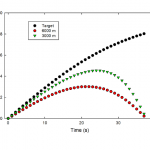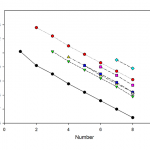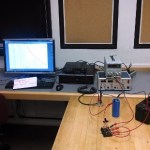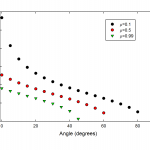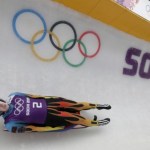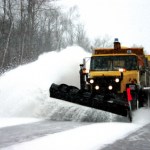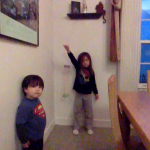Everyday
So, last week I idly wondered about the canonical falling-bomb whistle. The was originally intended to be a very short post just asking the question, but I got caught up in thinking about it, and it ended up being more substantial. And leaving room for further investigation in the form of, you guessed it, VPython simulations.
This one isn't terribly visual, so you don't get screen shots, just a link to the code at Gist. It's a simulation of a falling bomb, with air resistance, tracking the velocity as a function of time. Then it calculates a "Doppler shift" using the velocity as a fraction of…
Not that long ago, SteelyKid was doing something violent with toys (she's very tough, as you can see from the featured image above), and in the process made the canonical falling-bomb whistle noise. And it occurred to me to wonder, why that sound?
I mean, I've seen footage of falling bombs and the canonical sound seems like an accurate enough. But I'm not sure I understand it from a physics perspective. Specifically, when you do the falling-bomb whistle, you do a whistle that decreases in pitch. But the bomb is falling faster as it approaches the ground, so if anything, I would expect the…
This year's "Flame Challenge" asks scientists to explain color in terms an 11-year-old can understand. The rules limit answers to either 300 words of text or a 6-minute video. 300 words is ridiculously short, so video is clearly the way to go. Of course, I'm not much of a video expert, but then, one of the finalists last year (when the question was "What Is Time?") was just a guy talking into a webcam, and hell, I can do better than that. So I did this:
(This is, obviously, why I was fooling around with looking at the spectrum of light from my laptop a little while back...)
The approximate…
Last week, we looked at the resistance of a voltage sensor by using the discharge of a capacitor, getting a value that was a bit high, but not wildly out of line with the specs. This time out, we're going to look at the resistance of a current meter, because some students asked about it during Wednesday's exam review session.
The question came up because one of the things I have on the standards for the circuit portion of the class is knowing how to hook up a current meter and a voltage meter in the appropriate ways. This is strangely confusing for a lot of students, which gets annoying, as…
I'm running errands today, so here's a quick post picking up a question from last week's Olympic physics hangout: What sport involves the least physics?
One of the kids in the classes we were video chatting with asked that, and I really like the question, though it was a struggle to answer. It's one of those questions that will ultimately be like an excessively-zoomed-in data graph-- whatever the answer, everything starts with a pretty high baseline of physics content, just because there's physics in everything.
For the Winter Olympics, my original suggestion was ski jumping, thinking it was…
For the latest in our ongoing series of post where I overthink simple questions, I'd like to present the longest single continuous experiment in Uncertain Principles history, which took six and a half hours yesterday. All to answer the question in the post title.
This may seem like a waste, given that I could download a spec sheet, but it was a simple extension of yesterday's lab. I'm teaching E&M this term, and we're wrapping up the circuits portion of the class. Yesterday's lab was about the discharging of capacitors.
This is one of those concepts that sneaks in largely as a way to…
In comments to the post on computer display colors, Will Slaton notes that Mac displays emit polarized light. And, indeed, this is an inherent part of the backlit LCD technology-- the individual pixels are bits of liquid crystal between two polarizers, and an applied voltage causes the liquid crystal molecules to flip between a state where they rotate the polarization of light, and a state where they don't. In one of those configurations, the polarizers block the light, and in the other, they let it pass. By rapidly varying the voltages, you can make the pixels flash on and off in the right…
Ages and ages ago, I posted the picture that's the "featured image" above, and asked people to submit physics comments about it. Then I got distracted by a series of shiny things, and never did anything with the handful of responses I got. Because I'm a Terrible Person.
Anyway, it's long overdue, but here are the responses, with some comments from me. The first to send me something was Keith Hester, who emailed:
I find quite intriguing the lengthy unbroken --- and seemingly unsupported --- extension of snow that has slid over the left edge of the roof. The coefficient of friction between…
This year's "Flame Challenge" is to explain color in terms an 11-year-old can follow. I have opinions on this subject, a background in AMO physics, and access to scientific equipment, so I'm putting something together. In the course of this, though, it occurred to me to wonder how my different portable computing devices process color. And since I have access to an Ocean Optics USB4000 spectrometer, I can answer this question in more detail than anybody needs.
So, I have three principal electronic devices that I use to do computer-type things: a Moto X smartphone, an iPad, and a Lenovo…
In the previous post about luge, I mentioned that there was one thing that came up when Rhett and I were talking about this, namely why there are differences in times between racers. The toy physics model I set up last time suggests that the difference between riders is only a matter of aerodynamics-- two riders with the same mass and cross-sectional area ought to achieve the same speed. So why do they all get different times?
Well, if the sleds and other gear were all identical and locked into tracks, then mass and aerodynamics would be the entire story. But they're not-- the rules allow for…
In the Uncertain Dots hangout the other day, Rhett and I went off on a tangent about the physics of the Olympics, specifically the luge. If you're not familiar with this, it's basically psycho sledding: people riding tiny little sleds down a curved track at 80mph.
The "featured image" above shows Erin Hamlin of the US women's luge team during a training run (AP photo from here); she went on to win a bronze medal, the US's first in individual luge, so congratulations to her. The photo gives you an idea of what's involved: tiny sled, icy track, curved walls.
(In the Winter Olympics context,…
We got over a foot of snow yesterday and today, so schools are closed. Except Union is a residential college, so we never close, which means I have to dig my car out all the same. Which I did, clearing a path to the unplowed street, then took Emmy for her morning walk. During which, of course, the town snow plows came around and filled in the end of our driveway again...
As I was digging out again, I was struck by just how far the snow had gone up the driveway-- I paced off about six meters from the edge of the road to the farthest clumps thrown up the driveway. As a way to distract myself…
Last week, Rhett did a post on animating a bouncing ball in VPython. This was mostly making a point about the distinction between real simulation and animation, along the lines of yesterday's post on social construction of videogame reality. But, of course, my immediate reaction was, "That's not how a bouncing ball looks..." This is how a bouncing ball looks:
(As you can see from the watermark, I'm trying out a new video editor...)
This is footage of four different types of balls bouncing on a lab cart in our stockroom, shot in gratuitous slow motion (240 fps) because I'm still playing…
I realize people are getting sick of reading me talk about this charged-tape business, which has run to one, two, three, four posts at this point. Truth be told, I'm losing enthusiasm for it myself. So this will be the final post, at least for now...
As I mentioned on Twitter, as I type this stuff up for the blog, I've toyed with the idea of hanging onto it instead, and writing it up for The American Journal of Physics or The Physics Teacher, so I could get a little professional credit for it. There are two problems with that (other than that some stick-in-the-mud editor or reviewer might…
In addition to making a toy model to show the tipping-point behavior of charged pieces of sticky tape, I spent some time on Tuesday trying to do something quantitative with this. Of course, Tuesday is the one day of the week that I don't teach, and I didn't want to go to campus to do the experiment, so I put it together from the incredibly sophisticated materials I had available at home: Lego bricks and a tape measure belonging to SteelyKid and The Pip.
Having built this high-tech rig, I set up my new video camera on the tripod, and shot some videos of the key phenomena. First, there's the…
One of the labs we do in the introductory E&M class I'm teaching this term involves investigating charged particles with sticky tape. If you haven't seen it before, "invisible" tape picks up an electric charge when it's peeled off a surface quickly, and with a little care, you can create both positively and negatively charged tapes and investigate their interactions.
For Monday's class, I wanted to do a demonstration of one of the questions we were discussing, which involved the attraction between two objects with opposite charges and how that changes when you insert something between…
The other morning, I was lying in bed and for some reason, found myself wondering what the population of Niskayuna is. While this is easily Google-able, as I said, I was in bed, and didn't want to get up to get a device with Internet connectivity. So I tried to Fermi-problem my way to an answer using numbers I could come up with without opening my eyes.
The starting point for the estimate was the fact that SteelyKid's kindergarten class has 20-odd kids in it, and there are three kindergarten classes in her school. The school is one of five elementary schools that Niskayuna operates (Birchwood…
A couple of weeks ago, I got a cool picture of snow hanging off SteelyKid's playset, and posted a call for people to suggest physics-y ideas about that. I only got one response, probably because nobody really read the Internet over the holidays.
Anyway, the next time I'm likely to have the free time to write anything substantive is next Tuesday morning, so let me renew that call now, while people are trapped indoors by the POLAR VORTEX! with nothing to do but think about the physics of cold things. So, if you have physics-related ideas about the photo above (there's a view from a different…
I got a new camera for Christmas, not because there's anything wrong with my DSLR, but because I wanted something that could do high-speed video. So I now have a Casio point-and-shoot camera that will record up to 1000 frames per second, woo-hoo!
To break it in, I got the kids to help out by re-creating a classic slow-mo physics trick: the slinky drop:
Note that when SteelyKid lets it go, the bottom doesn't really move until after the entire length of the spring has relaxed. You can clearly see this in the still frame that's the "featured image" at the top of the post.
And since The Pip has…
While we were in Florida last weekend, we got a bunch of snow at home, so we came home to the proverbial winter wonderland. It's warmed up quite a bit since, though, and stuff is now melting. When I got home this morning after doing a bunch of revisions to the book-in-progress, I looked out the kitchen window to see the scene in the "featured image" above, which I will duplicate below:
Snow hanging off the edge of SteelyKid's playset.
That's the snowpack from the top of SteelyKid's playset, now melting, just barely hanging on from sliding off the edge of the plastic cloth stretched over…
